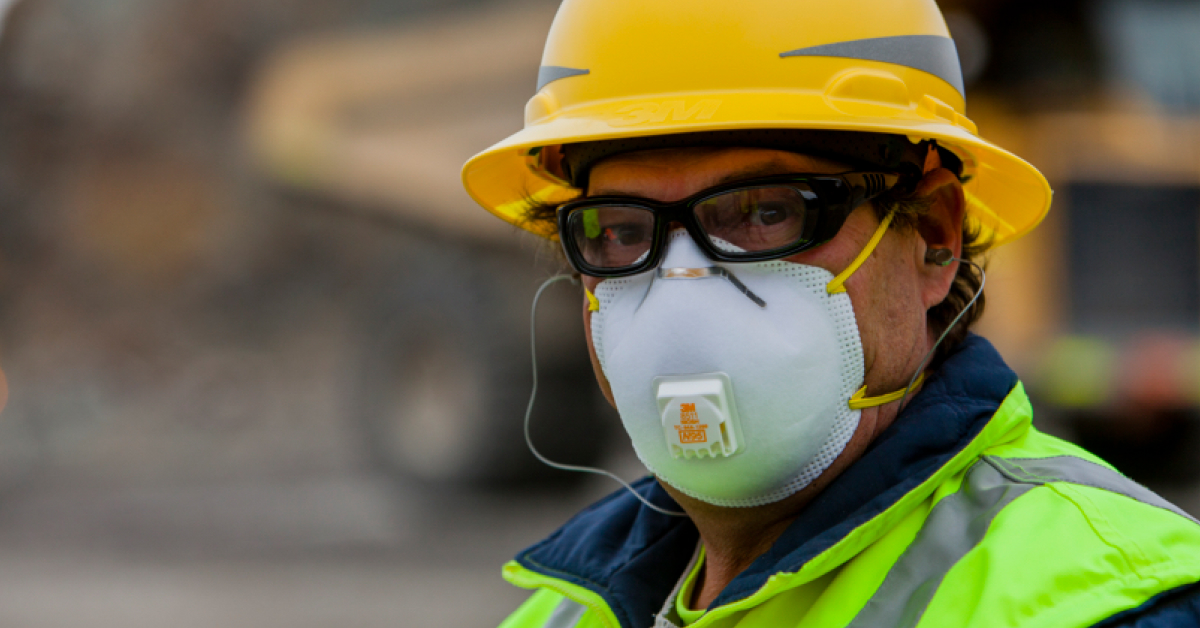Respiratory Protection
Factors to Consider When Selecting Respiratory Masks
1.Understanding the Work Environment
The first step in selecting the appropriate respiratory mask is to thoroughly understand the work environment and type of work as well as the area that the work is being conducted (Is it indoors, outdoors, confined space etc.) This includes identifying the types of chemicals present, such as dust, gasses, vapours, or a combination thereof. It’s crucial to assess the concentration levels of these substances and the duration of exposure. For example, mining operations, particularly in South Africa’s deep mines, expose workers to unique chemicals that require specific types of respiratory protection compared to someone working on a cement plant.
2. Assessing the Level of Protection Needed
Respiratory masks come with different protection levels, classified under the FFP1, FFP2, and FFP3 categories.
- FFP1: Lowest level of protection. Common applications for environments with low levels of dust that are not harmful to a person’s health.
- FFP2: Medium level of protection. Suitable for environments with moderate levels of fine dust and other non-oil based particles. Commonly used in construction, pharmaceutical, and agricultural sectors.
- FFP3: Highest level of protection. Suitable in environments with high levels of fine dust and where protection against very small particles is required. Commonly used in heavy industrial and healthcare settings.
For environments with higher levels of dust exposure, such as mining, an FFP2 or higher rating is recommended to provide adequate protection. The choice should be guided by a risk assessment to ensure that the selected mask offers sufficient protection against the identified hazards.
3. Fit and Comfort
A respiratory mask’s effectiveness is greatly influenced by its fit. An ill-fitting mask can compromise the wearer’s safety by allowing hazardous substances to enter the breathing zone. It’s essential to consider the face shape and size of the wearer when selecting a mask. Reusable masks often come in different sizes and have adjustable features to ensure a snug fit, whereas disposable masks may offer less flexibility in fit. Conducting fit tests is a critical step in ensuring that the selected mask provides the intended level of protection.
4. Compatibility with Other PPE
Workers often need to wear multiple pieces of personal protective equipment (PPE) simultaneously. It’s important to select a respiratory mask that is compatible with other PPE, such as helmets, eyewear, and hearing protection. The mask should not interfere with the fit or function of other equipment. Compatibility ensures that workers remain protected without compromising the effectiveness of any single piece of PPE.
5. Reusability and cost effectiveness
Choosing between disposable and reusable masks depends on several factors, including the nature of the work, frequency of exposure to hazards, and the work environment’s conditions. Reusable masks, while initially more expensive, may offer cost savings over time due to their durability and the replaceable nature of filters. Disposable masks, on the other hand, offer convenience as they are designed for single-use but may represent a higher cost in the long term for continuous use environments.
6. Regulatory Compliance and Standards
Ensuring that the selected respiratory masks meet local regulatory standards is vital. In South Africa, masks must comply with European standards (EN), which are rigorously applied to ensure the highest level of protection. Masks should carry the appropriate certification, indicating they have been tested and meet the required protection factors for their intended use.
7. Training and Education
Finally, the effectiveness of any respiratory protection program relies on proper training and education. Workers should be trained on the correct use of masks, including how to don and doff them properly, conduct fit checks, and understand the lifespan as well as limitations of their respirators/masks. This education ensures that workers are not only protected but also empowered to take responsibility for their safety.
Listen to our podcast on respiratory protection or Contact Us to assist in selecting the correct fit for purpose respiratory protection for your site. You can also view our respiratory mask options HERE.


